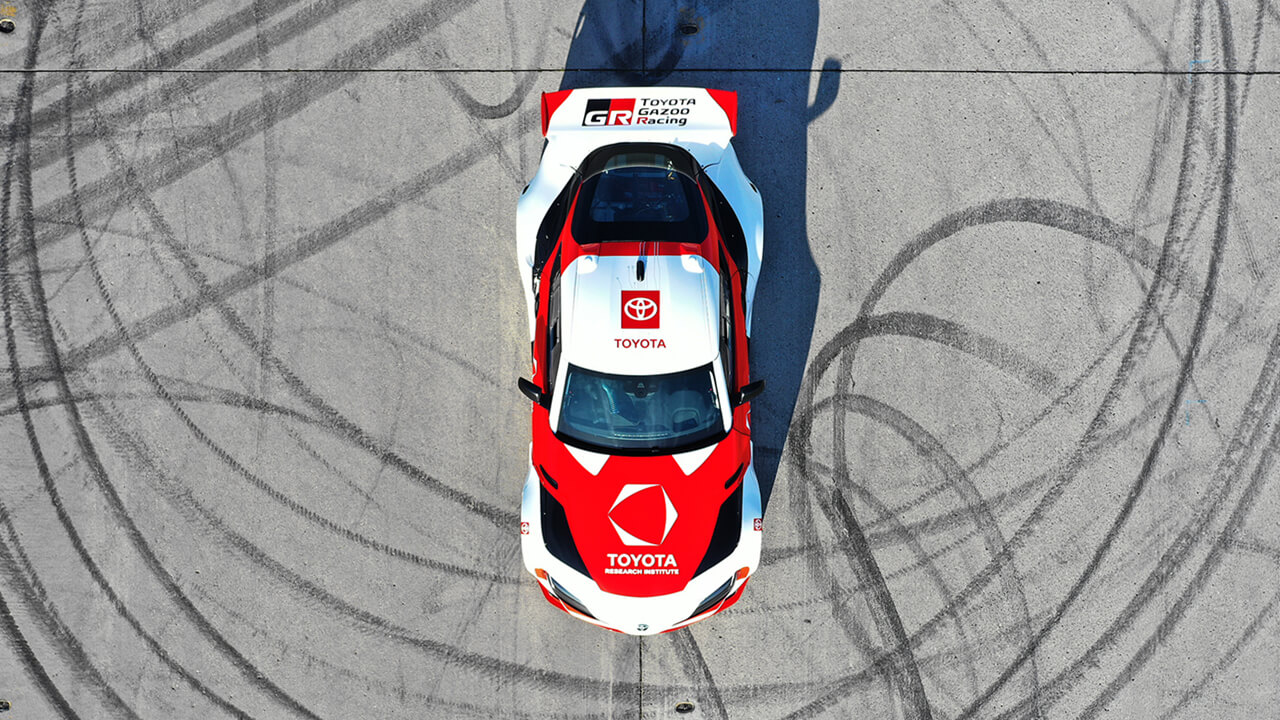Let’s face it – most of us aren’t professional drivers. We don’t have the reflexes and know-how that come with being behind the wheel for a living.
But with a partnership between Toyota Research Institute and Stanford University’s Dynamic Design Lab, your Toyota may be able to bridge that gap for you.
Toyota is already known for its Toyota Safety Sense system, which protects drivers with features like automatic braking and lane detection. However, this new research collaboration looks to engineer new safety technology that mimics the instincts of professional drivers — and they want to share it with the world.
That’s why other auto companies would also have access to the technology once it’s complete to protect as many people as possible. Every year, almost 40,000 people die in car crashes in the United States. That number is 1.35 million worldwide, and it can’t decrease unless everyone has access to superior safety technology. Toyota has a history of sharing its safety innovations, releasing its Total Human Model for Safety (THUMS) virtual crash dummy software for free in January.
But with a partnership between Toyota Research Institute and Stanford University’s Dynamic Design Lab, your Toyota may be able to bridge that gap for you.
Toyota is already known for its Toyota Safety Sense system, which protects drivers with features like automatic braking and lane detection. However, this new research collaboration looks to engineer new safety technology that mimics the instincts of professional drivers — and they want to share it with the world.
That’s why other auto companies would also have access to the technology once it’s complete to protect as many people as possible. Every year, almost 40,000 people die in car crashes in the United States. That number is 1.35 million worldwide, and it can’t decrease unless everyone has access to superior safety technology. Toyota has a history of sharing its safety innovations, releasing its Total Human Model for Safety (THUMS) virtual crash dummy software for free in January.
“
This research collaboration looks to engineer new safety technology that mimics the instincts of professional drivers – and they want to share it with the world.
”
Through this work, Stanford debuted a paper named “Opening New Dimensions: Vehicle Motion Planning and Control using Brakes while Drifting” during the 2020 IEEE Intelligent Vehicles Symposium. The engineers demonstrated a program that could control a rear-wheel-drive vehicle into a controlled drift using brakes, steering and propulsion — and Toyota was interested.
The efforts are going toward a system named Toyota Guardian, which is part of Toyota’s two-fold path toward automated driving. First announced in 2019, Toyota Guardian will assist the driver on the road through advanced automated features that would guide the car to safety even without a driver’s input. Engineers will then improve these technologies to create Toyota Chauffer, a fully driverless program.
 The Toyota Research Institute has been applying Stanford’s technology to vehicles like the GR Supra, a Toyota sports car.
The Toyota Research Institute has been applying Stanford’s technology to vehicles like the GR Supra, a Toyota sports car.
It isn’t just Stanford and the Toyota Research Institute doing all the leg work, however. Other sections of Toyota are also involved in the project — like Toyota Racing Development (TRD), Toyota’s in-house tuning shop since 1954. TRD has a special interest in performance technology that pushes cars to new heights, as seen in vehicles like the off-roading Tacoma TRD Pro. Toyota is also working with Toyota Motor Corporation's Vehicle Dynamics Control team in Japan to see how the programs could be applied in future Toyota models.
As groundbreaking as it is, this research is just one part of many Toyota Research Institute projects. Toyota has a history of working with Stanford, MIT and the University of Michigan in artificial intelligence research, but the company announced its plans to team up with 13 more universities in January 2021. It will invest over $75 million in the next five years to nourish these projects.
The technology these partnerships will produce is years away from appearing on the road — but it marks a new step toward automated driving and safety for all.
The efforts are going toward a system named Toyota Guardian, which is part of Toyota’s two-fold path toward automated driving. First announced in 2019, Toyota Guardian will assist the driver on the road through advanced automated features that would guide the car to safety even without a driver’s input. Engineers will then improve these technologies to create Toyota Chauffer, a fully driverless program.
 The Toyota Research Institute has been applying Stanford’s technology to vehicles like the GR Supra, a Toyota sports car.
The Toyota Research Institute has been applying Stanford’s technology to vehicles like the GR Supra, a Toyota sports car. It isn’t just Stanford and the Toyota Research Institute doing all the leg work, however. Other sections of Toyota are also involved in the project — like Toyota Racing Development (TRD), Toyota’s in-house tuning shop since 1954. TRD has a special interest in performance technology that pushes cars to new heights, as seen in vehicles like the off-roading Tacoma TRD Pro. Toyota is also working with Toyota Motor Corporation's Vehicle Dynamics Control team in Japan to see how the programs could be applied in future Toyota models.
As groundbreaking as it is, this research is just one part of many Toyota Research Institute projects. Toyota has a history of working with Stanford, MIT and the University of Michigan in artificial intelligence research, but the company announced its plans to team up with 13 more universities in January 2021. It will invest over $75 million in the next five years to nourish these projects.
The technology these partnerships will produce is years away from appearing on the road — but it marks a new step toward automated driving and safety for all.

